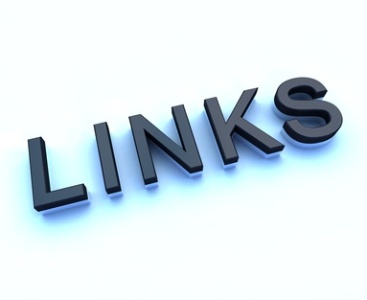Every webmaster, internet marketer and SEO knows that link building is one of the number one ways to get to the top of Google. But link building isn’t the only thing you need to think about. Just as important is getting rid of bad links. Google’s spiders rely on inbound links in order to find your content as they crawl from one site to the next. More than that though, Google sees each link pointing to a website as a kind of testimonial. The logic is that if lots of high quality websites have decided to link to a website, then it should follow that the website offers something of value. This is why historically, building links has always been one of the most important things you can do.
But to send Google this signal, then it’s imperative that ‘quality’ be the operative word. This is what you really need to focus on if you want to climb to the top of the search rankings. If lots of high quality sites are linking to yours, then the theory goes that your site must be high quality too. If you have thousands of low quality links on the other hand, chances are that you’re just spamming the web…
Google has reiterated the importance of quality time and time again and this has been the one unifying factor across its recent updates. With the next Penguin update just around the corner, there has never been a more important time to focus on the quality of your links profile. The question then becomes: How do you know if a website is high quality or not?
How to Identify ‘Toxic’ Links
Perhaps the easiest way for us to get higher quality links is to start with the process of elimination. In other words, let’s start by getting rid of those low quality links. It may be too late for this to be taken into account for the next algorithm update – but the sooner you can get rid of the toxic links that are weighing you down, the better off you’ll be. And this is doubly true when you consider that the current algorithm is ‘real time’ and able to adapt to changes on the fly.
Low quality links are the ones that:
- Are surrounded by low quality content
- Have no audience
- Deliver no value
- Link to other spammy sites
- Are covered in adverts
- Took no work to acquire
- Are completely irrelevant to your subject matter
- Engaging in link trading or selling links
The Importance of Relevance
But just because a site is high quality, that doesn’t mean that a link on that site would be high quality for you. That’s because ‘relevance’ also plays a very important role. You need to ensure that links pointing at your site are from pages that are highly relevant to your content. This is important because it tells Google what your site is about and which searches your site should come up in.
If you have a link from Harvard, then that suggests your site is high quality and trustworthy. But if your website is all about cats, then this isn’t going to help you rank for your keyphrases all that well. Think about it: Google can’t just make your site come up in every search – so it needs to see that you’re being recommended for a specific topic.
This also makes it important that you consider where on the website your link is going to go. Links can be domain to domain, page to page, domain to page… make sure that your link is coming from the most relevant parts of the most relevant sites and is pointing at your most relevant pages.
The Link Itself
Finally, you also need to think about the nature of the actual link itself. And by that I mean:
- Is it a nofollow?
- Is it a redirect?
- Where is it located on the site?
Don’t waste your time posting to the comments section of 100 good websites – Google is smarter than to fall for that. So now you know how to get the very best links and how to get rid of the ones that are slowing you down. All that’s left is to get out there and start building that links profile! Building high quality links takes a little more work but trust me: it is completely worth it in the long run.
How to Get Rid of Bad Links
If your backlinks profile still includes these kinds of bad links, then you need to start cleaning them up. You can do this by using Google’s Links Disavow Tool, or by contacting the webmasters and just asking nicely.
The latter option is the best one to go with, but if that doesn’t work then the linked tool will tell Google not to ‘count’ the bad link. This is especially useful for malicious links that are examples of negative SEO practices. The good news is that Google’s new Hummingbird algorithm adapts quickly to changes in its index – so if you are being penalized for bad links, your site will benefit immediately from removing them.
Don’t go too overboard while doing this though. It’s worth bearing in mind that keeping some low quality links can actually be a good thing. Why? Because it looks healthy and natural.
While Google hasn’t confirmed as much, there’s a good chance that Google will value this kind of diversity. There are undoubtedly some very low quality sites out there with links
- to the BBC,
- to Forbes,
- to Tim Ferriss’ blog.
If you’re a big influencer, then you’ll have all kinds of links pointing to you and you won’t have time to manage them all. So, don’t make your links too squeaky clean. Just make sure that the ratio of quality links is heavily leaning in the right direction!
